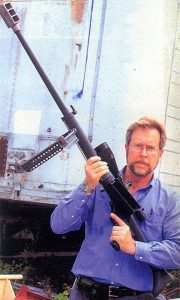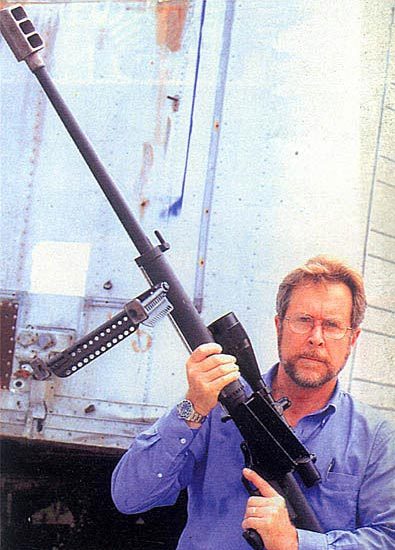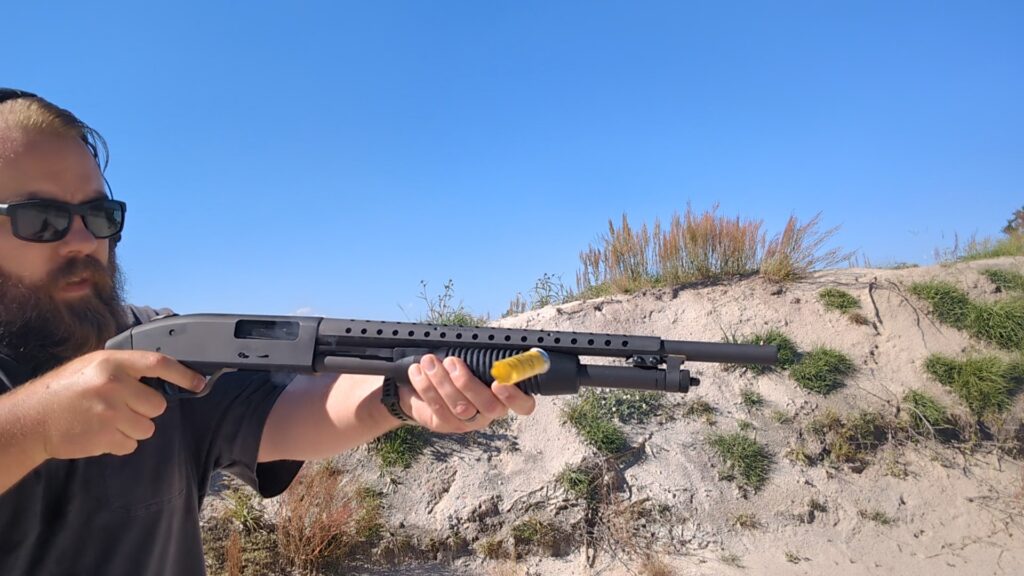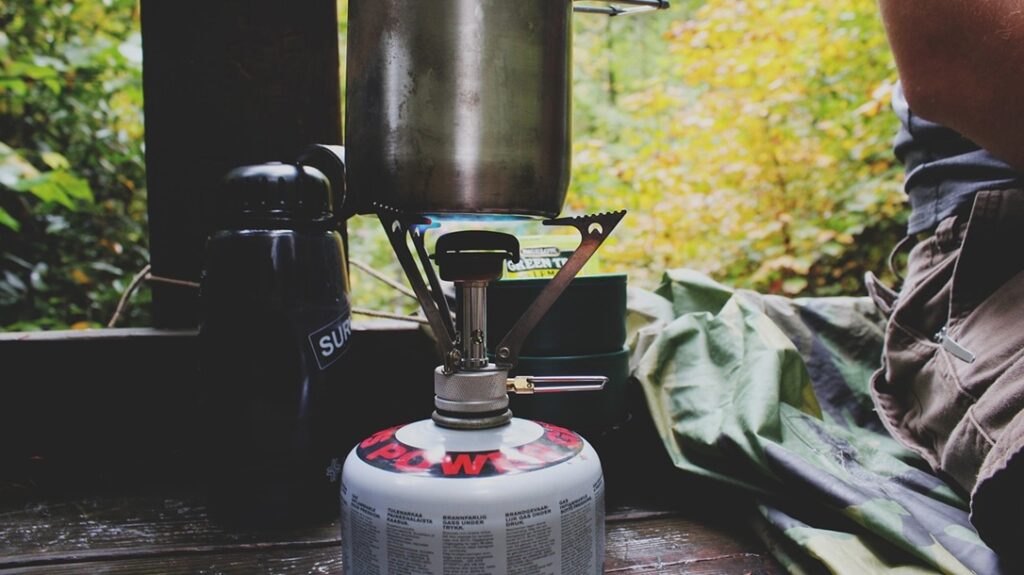Eugene Stoner designed a lot of firearms, his famous being the AR-15 which became the M16. On top of that, lots of parts and systems he designed went into other platforms. His design with the 7.62 NATO AR-16 was later poured into the AR-18. The Stoner 63 was quite revolutionary, although it sadly didn’t make the cut compared to the famed M-16. In his later years, Eugen Stoner went to work for Knight Armament, where he helped design rifles like the SR-15 and SR-15, oh and don’t forget the SR-50.

One of the many designs he was working on when he passed away was the SR-50. As the name implies, this would be an anti-material rifle chambering the .50 BMG cartridge. Development started in 1996, but Stoner’s untimely death sidelined the project, and it never left the prototype stage. The SR-50 looked to be a rather interesting design and would be built to complement the SR-25.
Advertisement — Continue Reading Below
Inside the SR-50
The SR-50 was to be a semi-automatic .50 BMG rifle. Work moved fast on the gun, and in under a month, they had prototypes and were taking preorders with 1,000-dollar deposits. The SR-50 used a gas-operated design and had a two-lug rotating bolt, which was not too different from the AR-15 design. Stoner designed the rifle fast and began producing numerous prototypes.
The rifle used a side-feeding magazine which served several purposes. The first is shortening the entire design. Second, it also makes the gun easier to load when fired from the prone. Much like a machine gun, the side-feeding design is much simpler. The rifle is semi-automatic and typical magazines hold ten rounds. It’s not out of this realm to picture bigger magazines, and they wouldn’t be restricted size-wise due to the side-feeding design.

Advertisement — Continue Reading Below
The SR-50 came with a bipod and what looks like an MG-42 stock. The rifle was optics-ready, and original designs utilized a quick detach barrel. The whole thing weighed 31.5 pounds. It was on par with the Barrett M82 of the same era. The use of a gas-operated system meant it would be easier to suppress than the recoil-operated M82.
Sadly the gun never secured a military contract, nor did it ever make it out of the prototype stage.
What Happened to the Stoner Rifle 50
It seemed to be a promising design, and KAC was offering it for 5,000 dollars, making it significantly cheaper than the Barrett designs that were popular at the time. Sadly, with the Clinton Assault Weapon ban, KAC turned to military contracts instead of civilian sales. A lot of the employees focused on the SR-25 series of rifles.
Advertisement — Continue Reading Below
With the M82 being dug into the military, the weapon stagnated. With the death of the primary designer, Eugene Stoner, the entire project fell apart. A Knight’s employee on Silencer Talk confirmed a second designer tried to fix the design but bungled it. A second effort in 2004 was attempted, but sadly never made it to the market.

According to that same Knight’s employee, it’s quite a sore subject at KAC. As of 2007, they still had deposits on the books and were actively seeking to return those deposits. The .50 BMG market is somewhat small, and the military is moving toward different cartridges for long range sniping. Rifles like the Barrett are becoming a little less relevant in the face of so many new and improved powerhouse calibers.
Advertisement — Continue Reading Below
Sadly, with the death of Mr. Stoner, the SR-50 is unlikely to ever see the light of day, but it’s an interesting piece of history in the world of Eugene Stoner.















